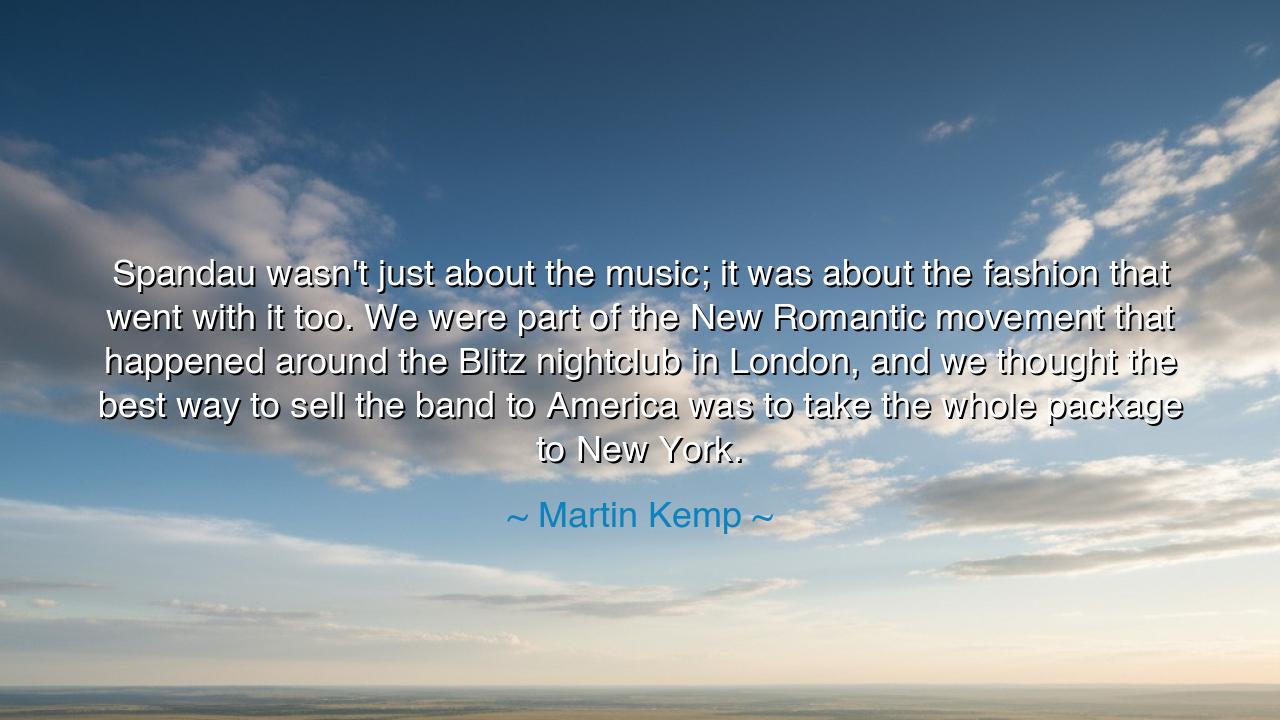
Spandau wasn't just about the music; it was about the fashion
Spandau wasn't just about the music; it was about the fashion that went with it too. We were part of the New Romantic movement that happened around the Blitz nightclub in London, and we thought the best way to sell the band to America was to take the whole package to New York.






Hear the words of Martin Kemp, who declared with pride: “Spandau wasn’t just about the music; it was about the fashion that went with it too. We were part of the New Romantic movement that happened around the Blitz nightclub in London, and we thought the best way to sell the band to America was to take the whole package to New York.” Though born in the bright dazzle of the late twentieth century, these words echo an ancient truth: that art is never one thread alone, but a tapestry woven of sound, vision, and spirit.
The New Romantic movement was no accident. It was born in the late 1970s and early 1980s, when youth, weary of gray streets and the austerity of a waning Britain, sought new worlds of color and style. In the flickering lights of the Blitz nightclub, artists and musicians, clothed in silks, lace, and bold imagination, declared rebellion against the dullness of ordinary life. Their creed was beauty, their armor was fashion, and their weapon was music. They believed that to perform was not merely to play notes, but to create a vision—a living dream where sound and sight merged into one.
It is no new thing, this marriage of art forms. In the days of ancient Greece, the theater united poetry, music, and costume in festivals to honor the gods. In the courts of Renaissance Italy, nobles attended spectacles where musicians, dancers, and designers joined their talents to overwhelm the senses with wonder. Always the wisest creators knew that the soul hungers not for fragments, but for wholeness—for the song that is also a vision, for the vision that carries a philosophy. The New Romantics, and Spandau Ballet among them, revived this ancient instinct in a new age of neon and city nights.
Kemp’s words also reveal the courage of artists who sought not only to enchant their homeland, but to carry their vision across oceans. To bring their full package to New York was not merely a marketing choice; it was a declaration of identity. They would not sever the music from the fashion, nor the sound from the spectacle. For they understood that true art is diminished when it is stripped of its fullness. To conquer America, they would arrive as themselves—whole, uncompromised, adorned in the glory of their movement.
Consider how the Beatles, two decades earlier, carried more than their melodies to the world. They carried the haircuts, the clothes, the spirit of rebellion that defined an era. Their music was inseparable from their look, their look inseparable from their message. So too, Spandau Ballet knew that to live as artists meant to embody their vision in every thread of their garments, every note of their songs, every gesture on stage. This is the power of unity in art: to touch the heart not with one sense, but with all.
The lesson is timeless: do not divide what was meant to be whole. When you create, give yourself entirely—do not merely write words, but live them; do not merely sing, but embody the song in your presence, your actions, your spirit. For the world hungers not for fragments, but for visions complete and radiant. Let your work be a package, as Kemp declared, so that when you step forth into the world, you bring with you not only a product but a universe.
Therefore, children of tomorrow, learn from the New Romantics. Let your life itself be art. Adorn not only your work but your being with the beauty you believe in. Refuse to let practicality alone dictate your expression; dare instead to live as a whole creation. For when sound, sight, and soul are bound together, your art will not only be heard—it will be felt, remembered, and carried forward like a torch through the darkness.
Thus, Martin Kemp’s remembrance of Spandau Ballet becomes more than a tale of a band. It is a teaching for all generations: that true artistry is not only about music, nor only about fashion, but about the fusion of every element of human expression into something unforgettable.






AAdministratorAdministrator
Welcome, honored guests. Please leave a comment, we will respond soon